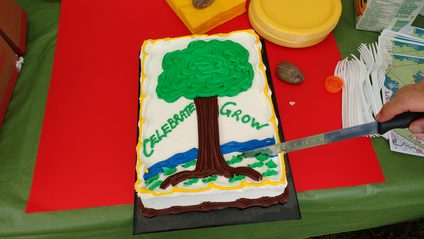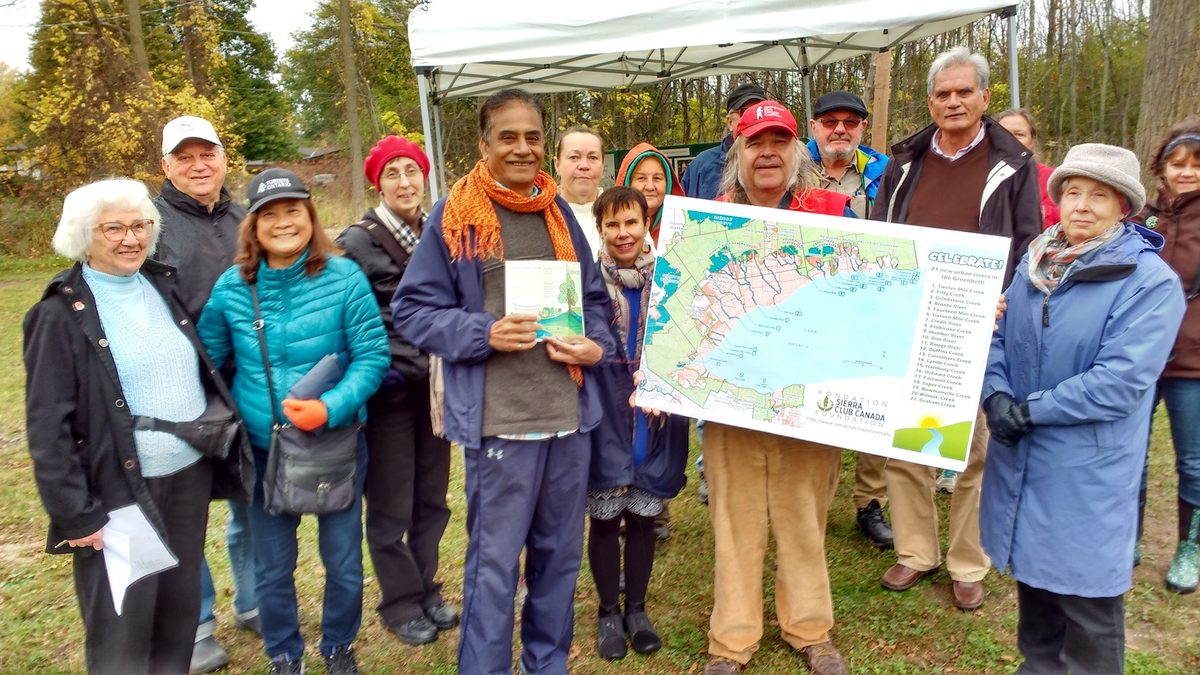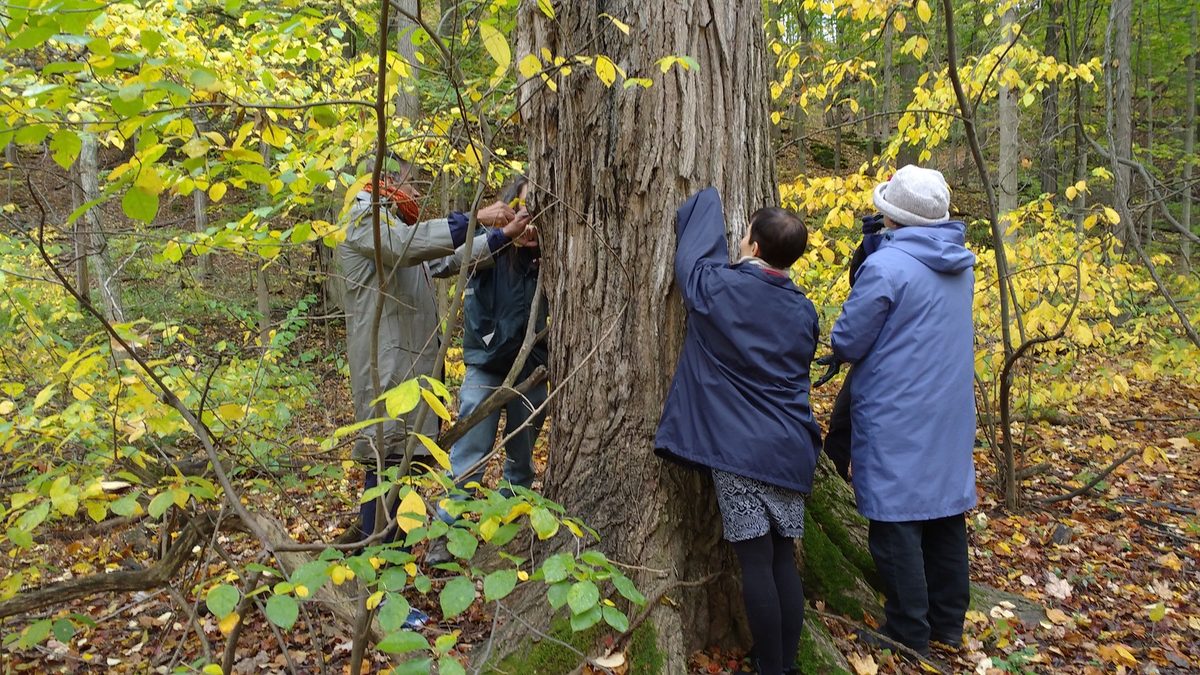
The Celebration
On the afternoon of October 28th, on St. Catharine’s' Lockhart Drive in a threatened Carolinian Old Growth Forest north of the Niagara Escarpment, the Sierra Club celebrated a major environmental victory. This was the extension of Ontario's Greenbelt to 21 major urban river corridors from Northumberald to Niagara. In Niagara, this involved the protection of Lake Gibson - a reservoir for most of the drinking water for Niagara's residents.
A cake was consumed to mark the celebration. Warm soup prepared by “Food Not Bombs” strengthened us for the subsequent hour-long hike into the grove of ancient Sugar and Black Walnut tree giants.

Old growth forests
Old growth trees provide many important ecological functions. One of which is critical is through their tree cavities and grooved bark to provide roosting sites for three endangered species of bats. These are the formerly common, Little Brown Myotis, the Northern Long-eared Myotis, and the Tri-Coloured Bat. These cave wintering bats suffer from devastating population crashes caused by the White Nose Syndrome, and are slowly starting to recover and need their roosting areas protected.
When borings are used to determine tree age, there is a risk of injury to the tree. Consequently, the Natural Heritage Guidelines of the Ministry of Natural Resources and Forestry (MNRF) give guidance to determine old growth based on what it terms "larger tree structure in native species" and meeting "minimum size thresholds." The test is a basic 8 trees having a diameter of at least 40 cm.

Appreciating the magnificence of giant trees
During the hour long walk it was astonishing for us to discover how many old growth trees of sufficient diameter size could be found in a small patch of the 16acre forest.
Participants in the walk were awed at the magnificence of giant trees, which often had complex collections of mushrooms - notably puffballs - beneath, and interesting garlands of plants growing out of tree cavities. The champions were five massive Black Walnut giants. Three of these monsters had diameters of 79cm, while another was 76cm. Three Sugar Maple champions were also recorded, the largest having a radius of 47cm.
A few days later some additional tree measurements were made. During this time the Red Headed Woodpecker, an endangered species dependent on old growth forest habitat for its survival appeared. Its arrival was a fitting tribute for the need to have these lands protectively designated as Escarpment Natural.
This article was written by Dr. John Bacher, Greenbelt Campaign leader at Sierra Club Ontario, and a member of the Preservation of Agricultural Lands Society (PALS).
